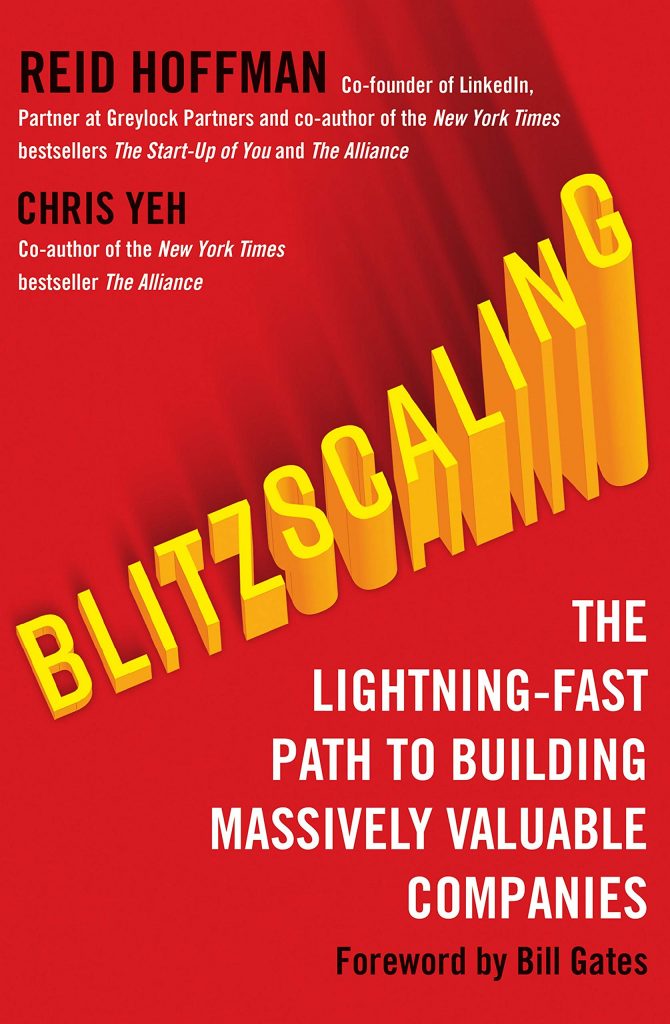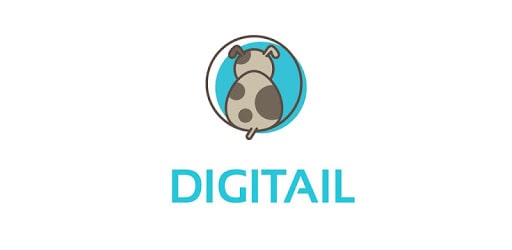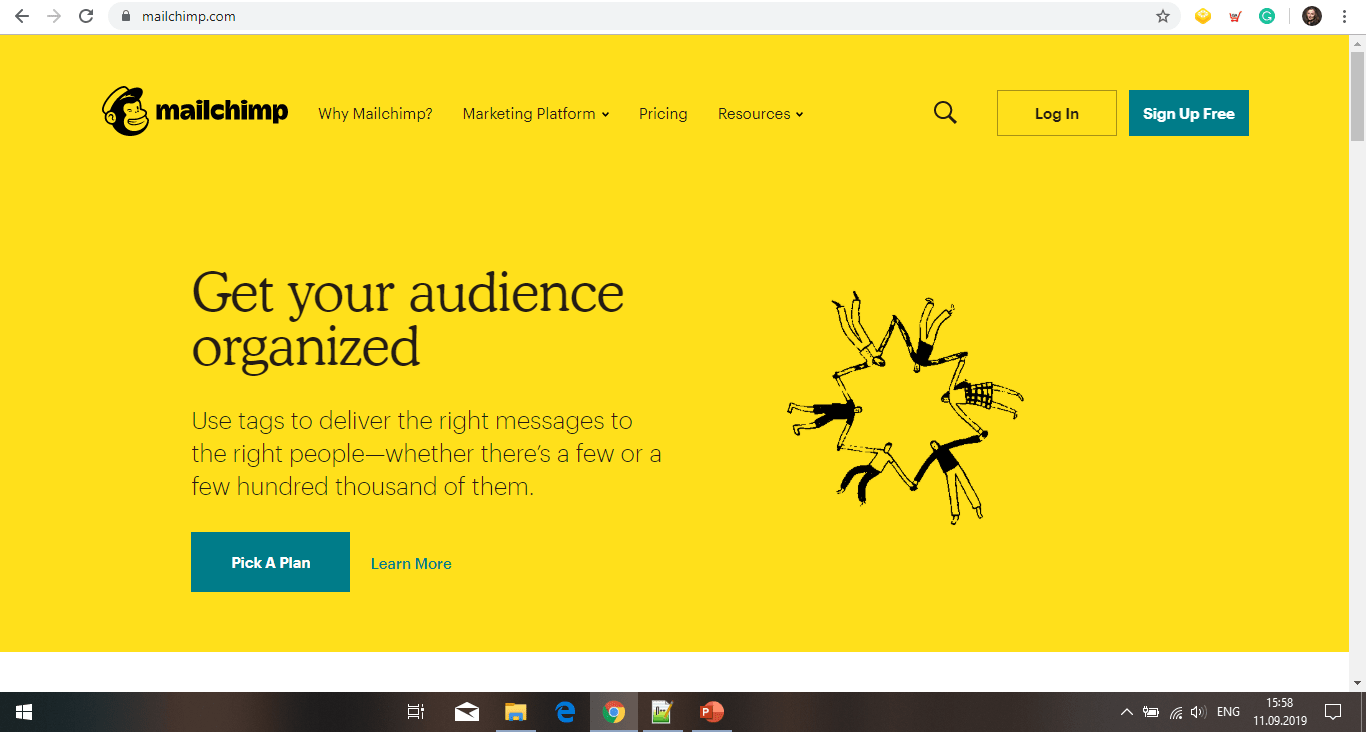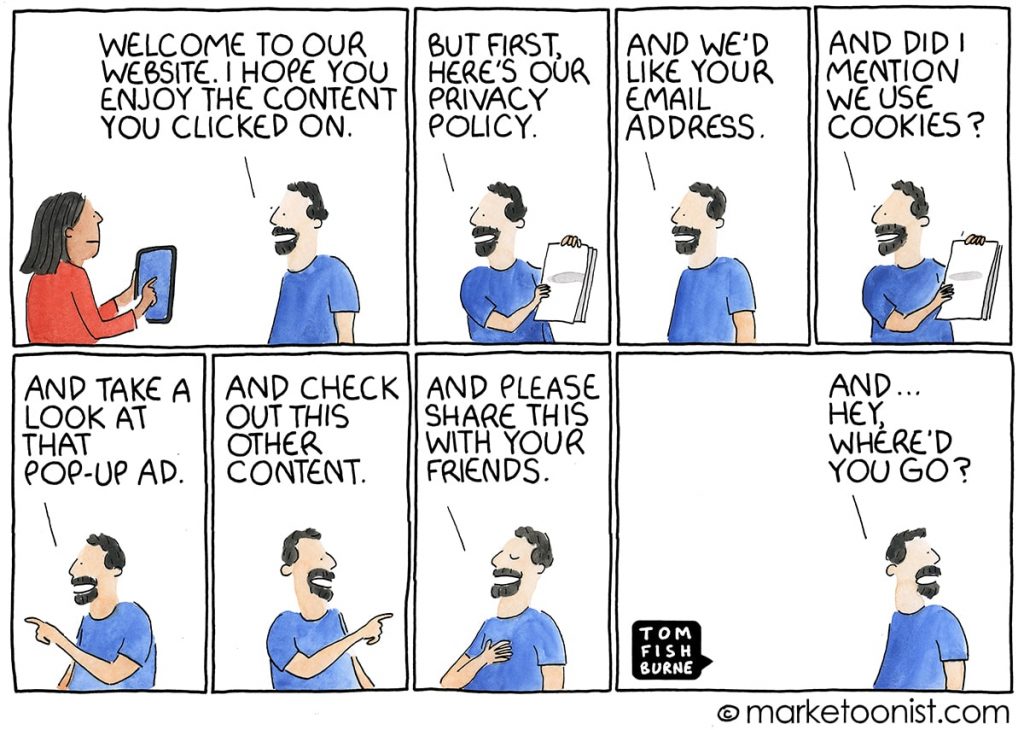Denis Tudor (co-founder at Swisspod Technologies): Hyperloop is the future of transportation
Denis Tudor is CEO and Co-founder at Swisspod Technologies. His startup is building the most efficient and affordable Hyperloop solutions.

CEO & co-founder Swisspod Technologies Denis Tudor
I reached out to Denis to learn more about the hyperloop and why he believes it is the future of transportation.
1. Speed is killing the planet. How does the hyperloop help stop the climate crisis?
Speed is killing the planet. I think it is time to focus on efficiency and sustainability. Our Hyperloop company, Swisspod, focuses to bring on the market the most affordable and efficient Hyperloop solutions, which means sustainability.
To fix ideas, for an average travelling speed 10x more than an electrical car, the CO2 emissions/km/passenger are 4x less.
We do need to stop the climate crisis and it is our duty (scientists and entrepreneurs) to convince the decision-makers to implement such solutions.
At the moment, we focus on reducing the CO2 footprint in Switzerland for a route between Geneva and Zurich (226 km). We propose a solution of 17 minutes for an energy consumption cost per passenger per journey of around 8 CHF.
2. What is the 5th mode?
5th mode is… the 5th mode of transportation. We have planes, trains, cars and boats.
Hyperloop will be the new mode of transportation which can be defined “as fast as a plane, as convenient as a train”.
It represents a transportation solution which can achieve sonic speed (1200 km/h) with lower CO2 emissions and energy consumption.

The Swisspod hyperloop pod design / Swisspod.ch
3. Your team entered the SpaceX Hyperloop competition this year and was the third-fastest transport pod. Your pod also ranked 1st in safety. Congratulations!
Thank you. Actually, my experience in Hyperloop is much longer.
I started this adventure in 2015 when Elon Musk launched the first Hyperloop Competition ever. The first competition was held in 2 different stages: design weekend and competition weekend. Around 10k teams from the entire world registered in the competition. We got the first prize for the best design award from Elon Musk.
After we won the Design Weekend in January 2016, we had a crowdfunding campaign in the Silicon Valley where we managed to fundraise the money we wanted. We had different collaborations with companies in Silicon Valley, as well as with NASA Ames California.
In September 2016 we won the first prize for the best design at a Hyperloop competition in Dubai.
In January 2017, the competition weekend was organized and we were awarded the Best Innovation Award after we built what we proposed at the design weekend. This was the second first prize from Elon Musk. Due to some issues, in the second competition, we did not get any award and I left the team.
I arrived in Switzerland and I created my own team here. At the third competition, we were awarded the first prize for safety and third prize for speed.
As a conclusion, I was awarded 4 different prizes in the last 3 years with 3 different capsules from Elon Musk: 1st prize for the Best Hyperloop Design, 1st prize for Innovation, 1st prize for Safety, 3rd prize for speed.

Denis Tudor at the biggest event in EPFL / LinkedIn
Now, I am retired from the competition and I opened my start-up with a Swiss person. I think it is time to let other young people push boundaries and have better results than us.
My only regret is that I did not win the 1st prize for speed, but yeah… speed is killing the planet.
At the moment, I focus on my start-up in Switzerland, Swisspod and on my PhD studies. I do a PhD in optimal sizing of the Hyperloop capsules in electrical energy. World-widely, this PhD is ranked second after Singapore. So, yes, pretty tough life… kidding. It is fun.
4. What was it like to meet Elon Musk? What did he like about your pod design?
Elon is a nice guy. I met him twice.
The last meeting was in the summer of 2018 where we had a meeting of about one hour. We had a very nice conversation and he inspired me to create the Swisspod Technologies company.
We also discussed the future of transportation and our pod design. He was especially impressed by our battery energy storage system which had a better performance than a Tesla.
Just to give you an idea, we created a vehicle whose power to mass ratio is 3x more than a Bugatti Veyron and 2x more than a Tesla.

Denis Tudor and Elon Musk
5. Share your vision of the future.
I hope Hyperloop will represent one of the transportation solutions. I do believe in complementary transportation solutions which means that we need to interconnect the different modes of transportation.
I believe in a fossil-fuel-free world and very low CO2 emissions. This represents a very important issue that needs to be solved worldwide.
In my vision of the future, AI will play a vital role but it will be constrained by different boundaries created by humankind.
Join the Conversation
We’d love to hear what you have to say.
Get in touch with us on Facebook Group and Twitter.
Checkr is making hiring better, fairer and more efficient
Performing background checks is one of the stages in the hiring process. Background checks are often slow and inaccurate. This leads to almost 2 in 5 employers losing candidates according to a Careerbuilder survey.
Also, poorly-run background checks provide candidates with a bad experience which can damage your company’s reputation: 56% of candidates think less of a company if they have a bad experience with its technology. A bad reputation and lack of trust increase the likelihood of talent avoiding you.
Checkr is a technology company in the background check industry. It is a technology platform built with artificial intelligence and machine learning which improves background checks accuracy to ensure everyone gets an opportunity to work.

Managing your background checks with the candidate in mind will make them happier, and make you more competitive in today’s talent market.
Checkr specializes in helping companies hire large volumes of people, realizing at the same time that there are people behind the number. Managing background checks with the candidate in mind will make them happier which in turn will make your company more competitive in today’s talent market.
Mission
We believe all candidates should have a fair chance to work. And, we understand that candidates are real people whose lives depend on the results we deliver. That’s why we’re committed to our mission of building a fairer future by improving understanding of the past.
We’re building a better future for everyone by making hiring better, fairer, and more efficient.
We’re committed to helping all of our customers reach their goals and find new ways to make hiring more inclusive.Checkr
Benefits of using Checkr in your company’s hiring process
- The platform has helped companies improve their hiring and opened up opportunities for candidates;
- It helps companies evaluate their existing hiring practices;
- Improved productivity, speed and accuracy;
- Employers find new ways to open up their candidate pools with Checkr technology;
- The AI-powered service rechecks and suggests anyone whose offence is older than your company’s cut-off date;
- By using AI-powered technology, your company can help remove some of the biases from the hiring process;
- Your hiring team is able to perform screenings more efficiently while reducing unnecessary costs and speeding-up your hiring;
- Your company runs a lower compliance risk, with higher-quality data and scalability to meet demand;
- Provides better candidate screening tools which allow your talent hiring team to quickly identify qualified candidates.
Checkr – Info and Data
The company was founded in 2014 and started out as a small group of technology and background check experts on a mission to build a better future.
Today the Checkr team includes more than 400 people. The platform has performed over 42 million background checks to date and helped companies hire more than 20 million applicants in five years.
Checkr has raised $160 million in Series D funding which they will use for three key initiatives:
- Expanding the functionality of the hiring platform,
- Improving accuracy and fairness while creating new products,
- Developing new international capabilities to align with the expansion plans of their customers.
The technology developed by Checkr has helped fuel the growth of the on-demand economy. The 2019 Mary Meeker Internet Trends report highlighted Checkr as a driver of economic growth.
The latest product was developed in collaboration with Uber and it is called Continuous Check. Continuous Check is the first background check product that actively flags potentially disqualifying records to ensure safety standards are met. With this product, Checkr is creating a new standard of safety for the ridesharing industry and beyond.
Join the Conversation
We’d love to hear what you have to say.
Get in touch with us on Facebook Group and Twitter.
Cristian Badea (co-founder @Sypher Solutions): On why organisations are not yet fully GDPR compliant
The GDPR is the most important change in data privacy regulation in 20 years. In the last year, the GDPR fines amounted to $405 million. Big corporations like Google, Marriott and British Airways were found in breach of the GDPR.
Sypher Solutions helps organizations and companies become and stay GDPR compliant. Its solution is called Sypher Suite and it is a GDPR compliance platform. The platform is currently used by more than 60 organizations in various areas: financial, insurance, software and technology, retail and eCommerce.
Learn more: Simplify your GDPR compliance with Sypher Suite
Cristian Badea is one of the co-founders at Sypher Solutions. He has extensive experience of personal data privacy and security, software and SaaS development. I reached out to him to answer a few questions on the GDPR associated challenges that organizations face when working to become GDPR compliant.

Co-founder @Sypher Cristian Badea
1. Sypher helps companies avoid becoming the next GDPR case study. How does your platform do that?
GDPR compliance programs can be incredibly complex, especially for large organizations. There are industries like financial services, insurance, telecom or retail, where companies are more publicly exposed. They also collect huge amounts of data which makes them more prone to both mistakes and public scrutiny.
When dealing with so many pieces of information spread across multiple tasks, mistakes are easy to make.
Sypher Suite is designed to simplify compliance work and help teams analyze, document and maintain GDPR compliance. It uses custom logic and specific flows to break the project into small, more manageable tasks, and make sure that everything that needs to be done is on the radar.
Our platform actively supports the compliance team to identify the areas that require their attention. It provides a framework allowing the Data Protection Officer (DPO) and compliance team to collaborate and exchange information with the rest of the business and external advisors. It also acts as a central repository for every information related to GDPR compliance.

Sypher co-founders, Mihai Ghita and Cristian Badea
2. Why aren’t businesses implementing GDPR? What is the most common reason?
We speak with a lot of businesses and most of them are aware of GDPR and trying to become compliant. According to a recent study by IAPP, most organizations reported that GDPR implementation took longer than expected (54% of respondents) and it is equally or more difficult to implement than other data privacy and security requirements (80% of respondents). Most organizations (72%) have a budget and the budget is renewed annually (35%) or continue indefinitely (24%).
Since budget is not a problem and awareness is there, we believe that a common reason for not being fully GDPR compliant in 2019 is the fact that organizations often lack the know-how and resources to manage the standard requirements properly, and fail to involve enough people in the process (GDPR is required for all organization teams and is not meant to be dealt with just with the DPO team).
To help them, we have developed specific tools that allow the compliance/DPO team to enlist support from the rest of the business. Our guidance and validation systems make it easy for anyone to contribute to the project, without the need for complex or lengthy training.
3. What challenges did you face while building your business?
We launched Sypher Suite to help companies become GDPR compliant quickly, easily and with minimal fuss. We believe that the GDPR compliance process should and must be simplified and organized.
Our story began in 2016, the year when the European Union published the new regulations regarding the protection of personal data.
The main challenge was to understand the needs, problems and hassles of persons in charge of GDPR compliance, namely DPO and to identify a better way to solve them. This challenge is applicable today as well, we strive to understand how GPDR requirements can be simplified so humans can stay on top of it and control it.
Sypher Suite was created after multiple discussions and meetings with potential clients across several industries, consultants and law firms, to understand how we can help conformity teams implement the new privacy policies.
4. Share your advice for aspiring or new startup founders.
It’s difficult to share general advice, as every startup is different at so many levels: goals, general environment, potential clients’ needs, the technology used and so on.
What we think it’s worth sharing though is this: do market segmentation, identify your best niche and address to a clear potential customer, with real pain and struggles. Addressing the whole market and each company may not yield the best results.
Also, transform your product’s features and capabilities into solid benefits for your potential clients.
Join the Conversation
We’d love to hear what you have to say.
Get in touch with us on Facebook Group and Twitter.
181 CEOs are redefining the purpose of a corporation
Contents:
- The Milton Friedman Shareholder Theory
- The Purpose of a Corporation in 2019
- Companies that already live by the 2019 Purpose of a Corporation
The Milton Friedman Shareholder Theory – the purpose of a corporation is to maximize returns to its shareholders

Milton Friedman / americanexperiment.org
In 1970 the Nobel Prize recipient and economist Milton Friedman published the Shareholder Theory.
The Shareholder Theory states that a company’s main responsibility is to its shareholders and that it has no social responsibility to the public or society.
Friedman goes on to argue that the business goal of any company is to maximize returns to its shareholders.
In his opinion, a society where companies concern themselves with the community rather than profit is a breeding ground for totalitarianism. The company is not the appropriate agent of social causes, but the individual.
This theory had great influence on the business world and laid the foundation for corporate America, a term which refers to the consequences big for-profit corporations have had on the American economic system and society at large.
Overall, these consequences have been negative. Critics of the theory have talked about how this doctrine has impoverished blue-collar workers while enriching corporate elites, allowed bad conduct and encouraged unhealthy employee competition to reach business targets.
In short, it was a dog eat dog world and it was bad for everyone in the long term. In his book Leaders eat last, Simon Sinek gives a highly researched in-depth description of corporate America and what it meant for the 1980s-early 1990s American society (if you haven’t read the book yet, I highly recommend it).
181 CEOs say it’s time to put the Shareholder Theory where it belongs – in the past
Business Roundtable is an association of chief executive officers of America’s leading companies like Accenture, Amazon, Apple, Boeing, Chevron, Cisco, IBM, Johnson & Johnson etc.
Business Roundtable promotes a thriving U.S. economy and expanded opportunities for all Americans through sound public policies. Founded 45 years ago, the association advocates policies to stimulate job creation, improve competitiveness and strengthen the economy.

Since 1978, Business Roundtable has periodically issued Principles of Corporate Governance and statements on the Purpose of a Corporation. Each version of these statements has stated that corporations exist principally to serve their shareholders according to the Shareholder Theory.
In August, Business Roundtable updated its statement on the purpose of a corporation and it was a big surprise to the business environment and the general public.
The 2019 Purpose of a Corporation includes 5 commitments where to the surprise of many, the responsibility to the shareholders comes last.
There are 193 CEOs members in the association and 181 of them have signed the statement, among which the leaders of billion-dollar companies like
- Jeff Bezos (Amazon),
- Tim Cook (Apple),
- Ginny Rometty (IBM),
- Stephen J. Squeri (American Express),
- Randall Stephenson (AT&T),
- James Quincey (Coca-Cola),
- Michael S. Dell (DELL),
- Mary Barra (GENERAL MOTORS COMPANY),
- Jamie Dimon (JPMorgan).
The 2019 Purpose of a Corporation – 5 Commitments
Here is the excerpt from Our Commitment, the page which includes the Purpose of a Corporation and features the signatures of all 181 CEOs:
“While each of our individual companies serves its own corporate purpose, we share a fundamental commitment to all of our stakeholders. We commit to:
- Delivering value to our customers. We will further the tradition of American companies leading the way in meeting or exceeding customer expectations.
- Investing in our employees. This starts with compensating them fairly and providing important benefits. It also includes supporting them through training and education that help develop new skills for a rapidly changing world. We foster diversity and inclusion, dignity and respect.
- Dealing fairly and ethically with our suppliers. We are dedicated to serving as good partners to the other companies, large and small, that help us meet our missions.
- Supporting the communities in which we work. We respect the people in our communities and protect the environment by embracing sustainable practices across our businesses.
- Generating long-term value for shareholders, who provide the capital that allows companies to invest, grow and innovate.
Each of our stakeholders is essential. We commit to deliver value to all of them, for the future success of our companies, our communities and our country.”

The Purpose of a Corporation / Business Roundtable@Twitter
During the past ten years, the business world learned valuable lessons in management and leadership driven by tech development, societal changes and the rise of digital.
Companies that didn’t adapt to the fast-changing business environment or lead their industry through innovations, no matter how big, have been pushed out of the market.
Other businesses with visionary leaders understood where the world was heading to and made changes which helped them thrive and develop. Some of them early on while others were able to correct in the last moment.
Companies that live by the 2019 Purpose of a Corporation
Founded in 1999 by 18 people, Alibaba writes its mission in capslock: CUSTOMERS FIRST, EMPLOYEES SECOND, SHAREHOLDERS THIRD.
In August 2018, Microsoft announced they will work only with suppliers which implement the paid parental leave policy within their organisation.
A 2018 Trendwatching report identified a powerful trend among consumers – the concept of legislative brands. Consumers expect brands to move beyond supporting social issues to “using their significant power to call for, promote, and even impose laws that drive constructive change and make the world a better place.”
Learn more: 5 Powerful Consumer Trends for 2019 from Trendwatching
If they want to still be on the market in the next ten years, corporations have to understand that people are closely monitoring the way they do business now and how their business operations impact the environment, their employees, their suppliers and the world overall.
Matter, a Danish startup, helps citizens choose sustainable pensions. The company provides Danish people with a list of companies to choose from. The list excludes harmful companies that produce weapons, tobacco and fossil fuels, companies that do not respect human rights or are known to be involved in corruption and includes companies that produce climate and environmentally friendly technologies, medicine and healthcare solutions.
Learn more: Sustainable pensions for a sustainable future
That’s a whole different world than the one Milton Friedman envisioned when he came up with the Shareholder Theory!
What is the purpose of your company? What does it commit to?
Join the Conversation
We’d love to hear what you have to say.
Get in touch with us on Facebook Group and Twitter.
How AI transformed Amazon into an eCommerce powerhouse
Amazon is an eCommerce powerhouse. In 2019, the giant retailer is expected to hit a 52% market share in the US and almost 14% worldwide.

Amazon global market share 2016-2019 / Statista
Here are 6 relevant statistics which help paint a bigger picture and explain how Amazon dominates the American retail eCommerce:
- During July 2019, Amazon.com had almost 2.65 billion combined desktop and mobile visits, making the platform the most visited e-commerce property in the US;
- In 2018, the company reported total net revenue of $232.89 billion;
- For 2019, the biggest revenue segment were online stores with $31.05 billion in quarterly net sales;
- AWS, Amazon’s subsidiary that provides on-demand cloud computing platforms to individuals, companies, and governments is the platform’s second source of revenue in the amount of $8.3 billion;
- Amazon owns more than 90% market share in 5 product categories: Batteries (97%), Kitchen & Dining (94%), Home Improvement Tools (93%), Golf (92%), and Skin Care (91%) (source);
- Amazon Prime has over 100 million users and has generated $9.7 billion in subscription revenue.
AI is the foundation upon which Amazon grows its online sales and other services
From predicting how many customers might buy a new product to running Amazon Go, the cashier-less grocery store to assessing the quality of fruits and vegetables without smelling them for Amazon Fresh because humans are too slow and inconsistent.
Amazon’s AI capabilities allow the platform to provide customized recommendations. According to the latest reports, Amazon’s recommendation engine drives 35% of total sales.
With more than 100 million Alexa devices having been sold, Amazon’s smart speaker maintains a 70% market share in the US. In a statement on the last quarter of fiscal 2018, Jeff Bezos said Echo Dot was the best-selling item across all products on Amazon globally, and customers purchased millions more devices from the Echo family compared to last year (source).
In 2018, Amazon developers improved Alexa’s ability to understand requests and answer questions by more than 20% through advances in machine learning. Also, the number of research scientists working on Alexa has more than doubled in the past year, Bezos noted.
The giant American e-commerce retailer builds everything on AI because AI solves shoppers’ problems which in turn supports Amazon’s customer-centric approach.
The latest 4 AI-driven company operations and platform features
Aside from the recommendation engine, here are 4 of the latest AI-driven company operations and platform features:
1. AI optimization in the fulfilment centre
There are 1 to 4 million bins per fulfilment centre (warehouse) and on the order of 10 million items. In every fulfilment centre, computer vision systems analyze images to help Amazon staff keep track of everything.
Based on data, AI solves a large combinatorial optimization problem and decides which orders to pick at the same time in order to get them in the same box. This way the system minimizes the distance the transport pods have to travel.
AI optimization makes these decisions in real-time and with information that is constantly changing.
2. Machine learning for Amazon’s product graph
The giant retailer based its product graph on machine learning allowing it to describe every item using product and non-product concepts. The system also forms links between different entities, solving actual customer needs.
People don’t just come to Amazon to buy products. They visit Amazon to see what’s new or interesting, or to discover ways they can simplify and enrich their lives.
Xin Luna Dong – principle scientist on Amazon product graph
3. StyleSnap – AI-powered fashion discovery

StyleSnap is the latest Amazon AI-powered feature which supports fashion-focused shoppers.
How does it work?
The shopper takes a photograph or screenshot of a look that they like, upload it in the app and StyleSnap presents them with recommendations for similar items on Amazon that match the look in the photo. StyleSnap also considers a variety of factors such as brand, price range, and customer reviews.
4. Alexa is helping the blind with its latest feature, Show and Tell
As a customer-centric business, Amazon listens to customer feedback. The blind and visually impaired make up one category of Alexa devices customers. Amazon researchers have provided the smart speaker with a new feature designed to cater to the needs of the blind and visually impaired called Show and Tell.
Show and Tell allows the blind to identify grocery items by holding each item to the Echo Show camera and ask, “Alexa, what am I holding?”. The smart speaker identifies the item through advanced computer vision and machine learning technologies for object recognition.
To learn more about the ways Artificial Intelligence could improve e-commerce businesses, I reached out to Alin Neacsu, AI expert and CTO at Deqod and invited him to answer the following question:
Why should eCommerce sites leverage the power of Artificial Intelligence?
Here is Alin’s answer:
The eCommerce industry is witnessing a redefined form that takes customers to a new level of experience and gratification.
Contributing value to your customers is the only way to sustain, grow, and outshine your business rivals.
Brands now intensively should invest their money in exploring how AI can increase brand competitiveness, various processes, customer loyalty & at last, revenues.
Companies are implementing AI to cut service costs — resolving inbound requests via self-service and quickly answering customer questions through conversational AI and intelligent process automation.
Artificial Intelligence enables a business to understand its customers better and do so more quickly. This capability feeds into an improved overall customer experience using sophisticated email algorithms and automated chatbots.
Another crucial aspect where AI has proven to be of valuable assistance is cart abandonment. It helps expand customer engagement by reducing cart abandonment rates by a substantial extent using Facebook messenger, email, SMS or other channels on the site.
Consumers are often disappointed with eCommerce experience because the product results shown are often irrelevant. To tackle this problem, AI uses natural language processing to narrow, contextualize and improve search results for online shoppers.
Also, it allows having visual search capabilities, finding and matching products. Now, consumers can take a picture of a friend’s new shoes or a new shirt, upload it and then AI enables consumers to easily find similar items through eCommerce stores.
Knowing who your competitors are, and what they are offering can help product owners to make their products, services and marketing really stand out.
The big data tools powered by AI can help shop owners to monitor pricing patterns because frequent analysis of pricing patterns helps them stay competitive. Big data analytics allows them to compare their businesses with those of their competitors’ in just seconds and that can be used to increase the market share. More than 80% of enterprises believe big data analytics will redefine the competitive landscape of their industries within the next few years.
Artificial intelligence marketing is looking to change the game of leveraging customer data with newfound concepts of machine learning. Its purpose is to anticipate the next right move to enhance a customer’s journey which in my opinion is still far from being perfect.
How do you plan to use AI to help your company’s sales?
Let me know in the comments.
Join the Conversation
We’d love to hear what you have to say.
Get in touch with us on Facebook Group and Twitter.
Simplify your GDPR compliance with Sypher Suite
The General Data Protection Regulation (GDPR) is a regulation in EU law on data protection and privacy for all individual citizens of the European Union (EU) and the European Economic Area (EEA).
The GDPR is the most important change in data privacy regulation in 20 years and came into force on 25th May 2018.
In the past year, we’ve seen many news reporting on companies and organizations receiving fines for breaching GDPR. Organizations can be fined up to 4% of annual global turnover or €20 Million.
Here are the latest GDPR fines:
- $123 million (£99 million) to the international hotel group Marriott for a breach that impacted 30 million EU residents;
- $227 million (£183 million) to British Airways when its website was compromised due to poor cybersecurity arrangements which lead to 500,000 customer records being extracted by a malicious third party;
- EUR 50 million to Google by France’s data regulator for a lack of transparency and consent in advertising personalization, including a pre-checked option to personalize ads.
If you want to avoid becoming the next GDPR case study, here is a platform that your organization can use to be GDPR compliant.

Sypher Suite is an easy to use software platform designed to simplify compliance work. This platform helps your team to avoid potential mistakes when analysing, documenting and maintaining GDPR compliance.
We have more than 40 years of combined founders’ experience in designing and implementing projects requiring security and data protection compliance in e-commerce, banking and insurance.
We use the very latest technologies and, with real attention to detail, we’re passionate about helping our clients to become GDPR compliant quickly, easily and with minimal fuss.
Sypher
Sypher Suite Main Features
- 3D Mapping validator – The validation engine combines and analyses information from multiple sources to help identify common data mapping errors and omissions and provide suggestions;
- Smart monitoring – The platform will notify activity owners when relevant changes are detected, show them what’s different and even reopen documents that need updating;
- Dynamic data flow – A visual maps showing dataflows from different standpoints;
- Data subjects request manager – Missing the deadline for a data subject request can lead to an official complaint. The DSRM module tracks all open requests and notifies you if the deadline is approaching.
- Automated task management – Every time you add new information into the software platform a task is automatically created and assigned, including any dependencies on other existing tasks. Tasks automatically update or close in order to match the status and owner of each item. This ensures that, regardless of how large your project is, every single action that needs to be undertaken is accounted for;
- Information and collaboration tools – Sypher Suite enables associates from multiple departments and companies to exchange messages, see who is doing what and to participate in the tasks involved;
- Multi-language interface – Sypher Suite is a multi-language platform where users can work and enter data in the language required by the local data protection authority. Reports, however, can be exported in your preferred language.
Benefits
- Track the compliance progress with real-time, actionable information;
- Everything in one place;
- Everything that goes into your GDPR documentation is verified and reviewed regularly;
- Easy to use;
- Bespoke – One size doesn’t fit all.
Sypher Latest News and Information
The platform is currently used by more than 60 organizations in various areas: financial, insurance, software and technology, retail and eCommerce.
According to crunchbase.com, Sypher’s estimated annual revenue is $100K.
In November 2018, Sypher raised 300.000 EUR financing from GapMinder.
The company has been selected to participate in the Alpha startup program within Web Summit 2019.
In August 2019, Sypher announced a strategic partnership with Mediapost HitMail in Bulgaria. Here the company targets a 25% market share, with a portfolio of large and enterprise customers, from a range of diverse industries.
Sypher has been selected as a finalist for the Startup of The Year Award in the 2019 Central European Startup Awards.
In the coming two years we aim to extend our business in several European countries, in Western Europe as well as in the Central and Eastern Europe. Another priority is to consolidate our partnerships with consultants and companies providing DPO services and legal offices using Sypher Suite when managing their clients’ projects.
Mihai Ghita, Sypher co-founder
Join the Conversation
We’d love to hear what you have to say.
Get in touch with us on Facebook Group and Twitter.
Vlad Macelaru (co-founder ClarK) – On building the glasses that can see through walls
Vlad Macelaru is the co-founder at ClarK, a startup which developed the Clark AR Glasses, named after Superman’s alter ego, the glasses that can see through walls.
He is an Ambassador for The Duke of Edinburgh’s International Award and Romanian IT, a community supporting the Romanian Startup ecosystem worldwide. He was recognized by Forbes Romania as one of the 30 under 30 tech innovators of 2019.

Vlad Macelaru
Vlad has been selected as a finalist for the Founder of The Year Award in the 2019 Central European Startup Awards (you can vote for him here). Vlad’s startup, ClarK has also been selected as a finalist for the Best IoT Startup Awards in the same competition.
I reached out to invite him to share the story of ClarK, the challenges his team faced while developing the product and his advice for new entrepreneurs.
1. Your team designed an innovative device: the ClarK glasses which are AR glasses fitted with sensors for industry workers. How did you come up with the idea for this device?
It wasn’t necessarily an “aha moment” in which we came up with the idea of building the glasses. The founding team met and started working on projects together one year before the glasses became a serious idea.
It was at Innovation Labs Bucharest in March 2018 when we decided to build the Augmented Reality (AR) glasses based on an older idea we had – glasses that can see through walls.

ClarK co-founder Ionut Moldovanu wearing the ClarK AR Glasses / photo source: Vlad Macelaru
We often brainstorm of very futuristic, almost science-fiction ideas. If you can imagine a product 10 years from now, or 100x better than what we have at this point, it’s much easier to imagine and grasp an idea that is only 2-3x better then the status quo.
The idea of smart glasses for industrial use is not new, Google was developing Glass Enterprise Edition, Microsoft had Hololens, but we knew we can build sensors modules and found it to be a great opportunity.
During Innovation Labs we discussed with mentors from industry, iterated aggressively, bootstrapping. The purpose was to improve functionalities, specs, ease of manufacturing and then developing use cases and adapting the prototypes before scaling (up) production.
[bctt tweet=”Vlad Macelaru (co-founder at ClarK): A picture is worth a thousand words, a prototype is worth a thousand pictures and a rapid prototype is worth its weight in gold.” username=”brand_minds”]
2. What challenges did you overcome while developing the Clark glasses?
The first challenge is to assemble a team – we were already friends and had a core team from previous projects and hackathons, so that was an advantage for us. We then continued bringing passionate people in with ease, since many want to work on cutting-edge technologies.
It is also quite hard to develop hardware products, for several reasons. Access to technology is one challenge, or limitation, that we still struggle with.
Another would be finding the best balance between functionalities – pushed by developers, and launching lighter, stable versions of the product for market validation and quick go-to-market.
We must always listen and try to empathize with colleagues in order to reach common ground between the engineers who aim for the perfect product and many functionalities and the business drive, wishing for faster, maybe lighter, versions delivered to the customers.

ClarK co-founders Vlad Macelaru and Costin Costea receiving the 1st prize in the Be an Innovator Student Contest organized by BearingPoint
3. You are a young inventor and entrepreneur. Was entrepreneurship something that you always felt comfortable with?
Neither myself nor my team considers me an inventor. My main merit is assembling the right team for the project and making sure they have all the necessary means and tools to act and grow.
I did study business and management in the Netherlands and had been interested in entrepreneurship since college.
Rather than comfortable with, I felt excited by the idea of developing products and finding the right niche in the market.

Vlad Macelaru and Clark AR Glasses v1 / photo source: Vlad Macelaru
4. What is your advice for young entrepreneurs?
Form strong teams aligned on the same end-goal (vision).
Ideas are not worth too much, build something, iterate aggressively (this is what we did).
Don’t choose the path of a mercenary (business solely for money).
Have patience.
A picture is worth a thousand words, a prototype is worth a thousand pictures and a rapid prototype is worth its weight in gold.
Join the Conversation
We’d love to hear what you have to say.
Get in touch with us on Facebook Group and Twitter.
6 Rules To Achieve Blitzscaling by Reid Hoffman, co-founder of LinkedIn
There’s a new buzzword that has been getting the attention of startup founders and entrepreneurs in the past year.
You might have heard it: blitzscaling.
As startup founders, looking for ideas to help your organization scale is in the top 3 questions you ask yourself the moment you wake up in the morning.
But what is blitzscaling?
According to LinkedIn co-founder Reid Hoffman who wrote ‘Blitzscaling: The Lightning-Fast Path to Building Massively Valuable Companies’, blitzscaling is setting up aggressive growth goals and achieving them.

To achieve ‘blitzscaling,’ you have to go against common sense.
Reid Hoffmann
The book has a foreword by Bill Gates.
Here’s what he says:
What entrepreneur or founder doesn’t aspire to build the next Amazon, Facebook, or Airbnb? Yet those who actually manage to do so are exceedingly rare. So what separates the startups that get disrupted and disappear from the ones who grow to become global giants?
The secret is blitzscaling: a set of techniques for scaling up at a dizzying pace that blows competitors out of the water. The objective of Blitzscaling is not to go from zero to one, but from one to one billion –as quickly as possible.

Reid Hoffman (image credits: Reid Hoffman Twitter)
6 rules to achieve blitzscaling by Reid Hofmann:
1. Embrace chaos
Throw order and stability out the window! Annual plans and clear business directions to follow? Ha! There’s no such thing when blitzscaling! You need to sacrifice efficiency for speed and stability for chaos.
But don’t give in to chaos, embrace it.
What’s the difference?
Embracing chaos means taking steps to manage uncertainty, not allowing it to paralyze your business.
Also, it’s not about charging ahead without preparation but rather making smart decisions based on your estimate of the probabilities.
2. Hire Ms Right Now, not Ms Right
A startup’s usual approach to scale is hiring an executive who could scale.
If you want to get your startup to the next growth stage, that’s not the right thing to do.
What you need to do is hire managers and executive who are prepared to handle the current phase of growth.
Size does matter: there’s one thing managing 1000 people and another to run a 10-person company. Each situation requires a different set of skills.
3. Tolerate “bad” management
While traditional business managers strive for stability and achieving smooth operations, blitzscaling startup founders strive for agility.
There is no time for career development conversations with your employees. There is no employee analysis to form teams. All you have time for is pick them and tell them they belong to a new team.
There are many challenges you need to overcome sometimes on a daily basis. Your employees have an overview of their roles but more often than not they will have to adjust to the series of cascading changes and undertake tasks which are not featured in their roles. Reid calls them “Oh s**t!” moments. There will be many of those and your management needs to stay agile to keep the organization afloat.
4. Launch your product even if it’s not perfect
If you are not embarrassed by the first version of your product, you’ve launched too late.
Reid Hoffman
Yes, you want your product to be perfect before launching it on the market. That’s a common mistake investors often see.
It’s also the main regret of startup founders – waiting too long before launching.
Your product doesn’t have to have a beautiful design or work perfectly on all operating systems or displays.
Give the product to your first users and work together to improve it. Seeing how users use your product in real life is the best feedback you will ever need to make your product the best on the market.
It’s better to get your product through iterations with the support of your first users than taking too long to launch a product.
‘Any product that you’ve carefully refined based on your instincts rather than real user reactions and data is likely to miss the mark and will require significant iteration anyway’, says Reid.
Not to mention the iterations made late in the product development process will be much more expensive.
The solution is to define a list of features that you think are the minimum required to enter the market. The result is called an MVP or a minimum viable product.
As investor Guy Kawasaki says in his speech The Art of Innovation about launching early: Don’t worry, be crappy!
5. Choose which fires are less important and let them burn
Every stage of blitzscaling includes problems to solve, situations to address, all sorts of crises, in short – fires.
You wish you could put them all out but the truth is you neither have the time nor the resources to do that.
That’s why you need to exercise the ability to prioritize. Identify which fires are the most dangerous to your organization and put them out first and delay putting out the rest.
6. Do things that don’t scale
In his 2003 essay, Paul Graham, co-founder of Y Combinator advises entrepreneurs to do things that don’t scale.
Here are a few examples that Paul gives in his essay:
- recruiting users manually,
- going out and engaging in person with users,
- thinking of new ways to delight your users,
- consulting which means pick a single user and act as if you were consultant building something just for that one user.
Joe Gebbia, co-founder of Airbnb says the methodology in Silicon Valley is that you have to solve problems in a scalable way. ‘That one line of code has to meet the needs of tens of thousands of people’.
But that’s not always the best solution to a problem.
Sometimes the best way to solve a problem is to do things that don’t scale like meeting with your users in real life and spending a few moments in their shoes.
That’s what the Airbnb co-founders have done at one point in the early phase of their product: they met with their users in-person.
Aside from getting valuable insight into user experience, the meetings resulted in a surprising change in users’ behaviour.
They started using the word love in the same sentence as Airbnb and they became brand ambassadors talking about the platform with their family and friends.
Here are other examples via Do Things That Don’t Scale:
DoorDash co-founders used to deliver hummus themselves and get direct feedback from their customers. DoorDash is now worth $12.6 Billion after new $600 million investment.
Slack founders begged their friends at other companies to try their messaging platform and give them feedback. Slack is now worth more than $20 billion. Learn how Slack grew to 8 million subscribers in 5 years.
Tinder reached 15000 early users by going on a road trip to college sororities and fraternities. The famous dating app is now valued at $10 billion.
Conclusion
What is blitzscaling?
Blitzscaling is going against traditional management rules like efficiency and risk minimization.
If you are looking to achieve blitzscaling, you are going to follow a new set of rules. These rules are counterintuitive and you didn’t learn them in business schools.
Blitzscalers are startup founders that do what it needs to be done (but it’s not illegal or unethical) to get their organization and their product flying.
Are you a blitzscaler?
Join the Conversation
We’d love to hear what you have to say.
Get in touch with us on Facebook Group and Twitter.
Your company doesn’t have these 3 marketing positions? It’s time to change that!
Do you want to create successful marketing campaigns?
The digital environment has given rise to so many digital tools, platforms and strategies that one marketer in your company cannot do everything that is necessary to get results. There’s only so much one person can do!
That’s why the marketer position has branched out into new marketing positions in recent years. It takes a team of specialists with valuable insights to reach customers.
3 Marketing positions you need to have in your company: Email Designer, Chief Listening Officer and Demand Generation Manager.
1. Email Designer
Email is the first digital communication tool and has been used by people and businesses since the early 1970s.
But don’t make the mistake of assuming that since it’s almost fifty years old, email marketing is obsolete. Far from it!
People still want to hear from their favourite brands and that’s what email is: a direct line of communication between brands and customers.
Understanding the benefits of permission marketing could yield businesses an ROI as high as 4000%. For every $1 spent, email marketing brings in $40. If (and that’s a big IF) you use email correctly. That’s where the email designer comes in.

What is an email designer?
An email designer is a designer who specializes in designing emails for brands and businesses with the purpose of helping them meet their business targets.
The email designer is required to have coding skills, user experience design knowledge and an eye for beautiful imagery.
What does an email designer do?
The email designer’s job is to create a branded email template from zero or optimize third-party email templates with the goal of bringing in results: sales, brand awareness, in-store foot-traffic, leads, website traffic, event subscriptions etc.
The email designer works closely with the email marketer who provides them with the content and makes sure the result is on-brand.
Designing for email is about getting to the point and making the most of the brief chance you have with your subscribers. You only get one shot, so it’s worth employing as many tricks in the book as possible to make sure your message gets through. The underlying principles are all about respecting your readers by giving them something valuable in return for their time which is, after all, the reason they signed up to hear from you in the first place.
Nicole Merlin, Email designer and developer
2. Chief Listening Officer
It used to be that your customers listened to what you had to say on TV ads, outdoor banners and newspaper advertorials.
In this digital age, they are still listening to your messages but they are also talking about your brand, your products and your culture. Your customers are talking about you on social media, personal blogs and forums.
Learn more: 7 ways you can grow your business with social media listening tools
Are you listening to what they’re saying?
If you are not, you are missing opportunities for business growth, customer engagement and brand development.
There are many social listening tools that marketers can use, but the scope of this activity has increased so much in recent years that it generated demand for a standalone position: the Chief Listening Officer.

What is a Chief Listening Officer?
A Chief Listening Officer is a social media specialist who takes an overall approach to social.
The position is a step above social media manager and it is fairly new to the digital community.
What does the Chief Listening Officer do?
The Chief Listening Officer monitors the conversations which involve the brand or product.
The specialist listens with the purpose of getting a better understanding of what customers like or dislike about the brand or product and the overall sentiment around subjects relevant to the brand.
How are customers feeling about the brand: mostly positive, mostly negative or neutral?
What are their opinions?
What are they complaining about?
According to Brandwatch, 96% of the people that discuss brands online do not follow those brands’ owned profiles so monitoring the conversations around your brand is not an easy task.
The job of the Chief Listening Officer doesn’t stop at listening. He or she is expected to create strategies to influence and change the negative opinions into positive opinions or maintain the positive outlook that customers have on the brand.
Through social listening, the Chief Listening Officer gains valuable insights which they can transform into new product ideas, tips for product development and overall business growth.
With people being more willing to share opinions and ideas across social media, this job plays a big role in forward-thinking to stay ahead of the competition and keeping customers happy with your company.
Nicole Martin, owner of NR Digital Consulting and host of Talk Digital To Me Podcast
3. Demand Generation Manager
Demand generation refers to any activity that drives awareness and interest in your product or service with the ultimate goal to create a predictable pipeline that will grow your business.
Demand generation strategy includes creating demand for sales but is not limited by it.
Demand generation is about being at the right place in the right moment providing the right content to your customers. The content you share must be a perfect fit for your ideal customers’ needs.

What is a Demand Generation Manager?
A demand generation manager is a revenue-centric marketer with seasoned skills in inbound and outbound marketing.
What does the Demand Generation Manager do?
The demand generation manager develops, maintains and executes demand generation plans aligned with business goals.
They have a deep understanding of the buyer’s journey, ensuring that content reaches the right part of the sales funnel at the right time. They also collaborate with sales and marketing to build programs that support sales enablement.
The Demand Generation Manager helps your brand reach new markets, promote new product features and build consumer buzz.
Has your company established positions for Email Designer, Chief Listening Officer or Demand Generation Manager?
Share your answer in the comments!
Join the Conversation
We’d love to hear what you have to say.
Get in touch with us on Facebook Group and Twitter.
Body language for women in business – 9 ways to look more confident
Whether you know it or not your body speaks about you without you having to open your mouth. It’s called body language or nonverbal behaviour and it can communicate a lot about your present state of mind or your level of self-confidence.
Just like we control what we say, we can control what our body says about us. It’s even more important for women in business who struggle with workplace biases.
9 ways women can use body language to look more confident in business situations:
1.Stop making yourself smaller

Image source: thebusinesswomanmedia.com
When we are growing up, we are taught that good girls don’t raise their voices, speak only when spoken to, sit quietly in one place and don’t bother anyone. Girls are expected to be invisible and take as less space as possible.
That’s what most grown women do: they make themselves smaller. Arms hanging on the side of the body, shoulders slouching, legs crossed.
Of course, you can’t do manspreading – it looks bad and it’s in poor taste to imitate men because you risk becoming a caricature of yourself.
Instead, you can do as follows:
- Extend the space you take up with your posture and possessions
- Straighten your back when sitting down
- Find a comfortable space for your elbows if you are sitting in a meeting
- Spread your notes on the table
2. Don’t over-nod
Women are generally supportive. They encourage their children and their spouse, other family members and friends. They are masters of active listening and show their empathy by nodding their heads in approval. Sometimes they over-nod to show support.
Over-nodding may be appropriate in family situations, but it’s inadvisable in business situations. So observe your body language and refrain from over-nodding.
If you’re talking to business partners, be sure to nod only when you really agree with someone, not by default.
3. Stop fake smiling
You don’t see parents asking their sons to smile and be nice, but you definitely see parents teaching their daughters to learn fake smiling early on. Women are used to hiding their true feelings and smiling even if they don’t feel like it.
In a business environment, your worth is not related to how much other people like you. You’ve been hired for your skills, creativity and work ethic. You are expected to deliver results and solutions, not being nice to everyone in the office.
You don’t go to the office to be nice and make friends.
You go to have an impact.

4. When nervous, refrain from self-comforting
When women are nervous, they tend to self-comfort by tucking their hair behind their ears, playing with a lock of hair, touching their face or adjusting their clothes.
These movements will be perceived as too feminine and they will take away from your professional power.
5. Give a firm handshake

Your appearance and looks generate the first impression while your handshake generates the second impression.
A firm handshake tells the other person that you are confident in your abilities and that you are well aware you deserve to be there.
You are as competent as your male counterpart so you need to convey this in your handshake. Your handshake should be firm, brief and accompanied by confident and steady eye contact.
6. Do the hand steeple

The woman is hand steepling
The hand steeple is when you prop up the fingers of one hand, with the finger of the other hand, to form a bridge. It’s a gesture of confidence and self-assuredness.
According to body language experts, “the steepler is someone that is confident, sometimes overconfident, genuine, authoritative, and particularly evaluative of others around him.”
Don’t use the hand steepling in team building because you could come off as arrogant. This gesture is effective if you already possess power or want others to think you do.

The woman standing has steepled fingers.
7. Keep head tilting to a minimum
The head tilt indicates sincere interest and curiosity.
Women and children tilt their heads to express admiration in a nonverbal way, to gain sympathy and protectiveness. It’s a posture which conveys vulnerability and submissiveness.
Try to keep the head tilting to a minimum so you don’t appear to lack authority or power.

The woman tilts her head while listening to the man.
8. Give an air of calmness and control
Women express themselves easily with words and gestures. They participate in conversations with a wide range of hand gestures, facial expressions, body position and movements. Among family and friends, women’s physical expressions are a way to connect and empathize.
In a business environment, an excessive amount of hand gesturing and body movement could be easily misinterpreted as a lack of control and people could have a hard time seeing you as a serious professional.
Give an air of calmness, control and allow people to take you seriously by keeping the amount of movement to a minimum.

9. Adopt the Wonder Woman pose
Wonder Woman is the symbol for a powerful woman. Remember her pose? Both feet standing firmly on the ground, chest out, straight back and hands resting confidently on the hips with the elbows flaring out.
The Wonder Woman pose is an expansive posture used to make the body appear larger and taking up more space. It’s the best posture to use before an important pitch to boost your confidence.

The Wonder Woman pose

Amy Cuddy doing the Wonder Woman pose / YouTube

Research has found that expansive postures such as this one help boost testosterone and simultaneously lowers the stress hormone cortisol.
Adopt this stance when you want to take on a leadership role and you want your team to perceive you as confident and ready to get down to business.
Discover high-power poses that you can adopt to feel more confident and powerful in this talk given by social psychologist Amy Cuddy:
Join the Conversation
We’d love to hear what you have to say.
Get in touch with us on Facebook Group and Twitter.
Source: bodylanguageproject.com
Digitail, the digital platform for veterinarians
Digitail is a digital platform for veterinary practice management. Read on to learn more.
Are you a pet parent? If you are not, you probably know someone who is.
Globally, 57% of consumers own pets according to a 2016 GfK survey. Dogs are the most popular pet globally, owned by 33% of respondents, with cats coming in second, at 23%.
Pets brighten our lives across generations. New parents are giving their children a companion and a friend. Many reports show growing with a pet is beneficial for children in terms of learning empathy and responsibility, social skills and communication. Millennials raise pets as the ultimate rehearsal before raising a child. For the elderly, sharing their lives with a pet increases their quality of life.
We love our furry babies and wish to offer them only the very best: the best food, the best pet care products and the best medical services.
As pet owners, we expect veterinarians to provide the same high-quality services as human doctors do.
Stepping into the vet’s office, we expect to have a pleasant experience.

Digitail is a veterinary platform for practice management. It’s a digital tool that helps vets gain time, automate redundant processes and provide efficient services to their clients.
The team behind Digitail is international with offices based in Romania, Germany and Spain.
Digitail has been nominated at the 2019 CESA Awards competition and is a finalist in two categories: Startup of the Year and Best Health Tech Startup.
Benefits of Digitail
1.Maximize Revenue
With Digitail, veterinarians make sure their customers are coming back for preventive care treatments. They can increase the chances of referrals by offering the best customer experience.
2. Save Time
Vets can save time by getting rid of redundant activities such as filling in registries and reports, inventory or calling customers.
3. Data-Driven Decisions
It’s time for vets to make the correct decisions based on data. They can find out what products are selling the best, what are the most popular services and how the staff is performing.

Features of Digitail
Reminders & Notifications
Digitail sends automatic emails, SMS or in-app notifications to customers to make sure they don’t forget their appointment.
Online Appointments
Digitail offers a dedicated online appointment system where clients can request new appointments.
Electronic Health Records
Vets can easily search for patients files and medical records.
Automatic Registries
The platform allows veterinarians to focus on examinations while all accounting reports and medical registries are automatically generated.
Cloud System
Data is securely stored in the cloud, but also easily accessible to whenever it is needed.
Stock Management
The platform helps vets understand what products sell better and what is the margin on the treatments and surgeries they offer.

What can vets do on Digitail?
- Add the services of their veterinary practice;
- Customize their services by the duration;
- Create shortcuts for the most common veterinary diagnoses that they use in their practice;
- Import all their patients’ details in two simple steps;
- Add a new patient in less than 1 minute;
- Easily find patients and clients with the platform’s search function;
- Add more pets to the same client;
- Generate invoices;
- Organize all appointments in one place, easily search for past visits, cancelled or upcoming appointments;
- Online appointment booking;
- Have an overview of all the payments received from clients.
Join the Conversation
We’d love to hear what you have to say.
Get in touch with us on Facebook Group and Twitter.
26 User Experience (UX) Design Stats for Digital Success
What is User Experience (UX) Design for Digital Success?
User Experience (UX) Design improves customer satisfaction and loyalty through the utility, ease of use, and pleasure provided in the interaction with a digital product (mobile app, website etc).
We interact with digital products a dozen times every day. From checking social media to ordering food and texting our loved ones. According to AppAnnie, the average smartphone user has more than 80 apps on their phone and uses close to 40 of them each month. If they weren’t easy to use, they wouldn’t be on your smartphone!
To help you understand how vital UX Design is to every website owner or admin and essential to every entrepreneur and business owner, I’ve put together the following list of 26 stats.
26 User Experience (UX) Design Stats for Digital Success
1. 70% of people scroll your content; only 20% scroll to the bottom.
Put your best content first.
2. Users spend 80% of their time above the fold.
Make the content above the fold engaging, eye-catching and tell them what your product or service is all about in as few words as possible. Make it concise and to the point.

3. 74% of users only see the first two screens.
Make sure the first two screens include relevant content to your website visitors.
4. It takes 0.05 seconds to form a design opinion.
That’s fast! Will your users like what they see?
5. First impressions are 94% design-related.
As in life, you need to make a great first impression and a good design helps you achieve that.

6. 75% of users scan your content instead of reading word for word.
Yes, it took you three hours to craft your latest in-depth long-form blog post and your readers won’t read it, they will scan it. It’s true what they say: writers don’t get the appreciation they deserve. It’s sad, but there’s a solution: use sub-headlines, bullet points, lists, paragraphs etc to help your readers understand quickly what your blog post is about.

Source: uxplanet.org
7. Users avoid looking at adverts based on their location: right-hand margin and top banner.
It’s called ad blindness and is the result of the digital ads proliferation that happened in the late 1990s. As a measure of self-protection, our brains learned to ignore these ads or any content placed in the right-hand margin and top banner. Don’t place important content there!

8. Find out how people use your product or service in the real world.
The first rule of marketing is you are not the customer. Go out and meet with your customers. Speak to them and see how they use your product in the real world.
Here are the top 5 user testing methods as recommended by Adobe:
- Usability testing where UX designers understand how real users experience your website or app.
- Focus groups help them assess user needs and feelings both before a product’s design and long after its release.
- Beta testing allows UX designer to roll out a near-complete product to individuals who are happy to try it and provide critical feedback.
- A/B testing is ideal as the appropriate testing method when designers are struggling to choose between two competing elements.
9. What is the user experience? What people feel, want, think, believe, remember, don’t realize about your product.
UX designers are critiques, artists, psychologists, behaviour analysts and architects. They think in the past, present and future.
10. Great user experience design can boost your brand, customer satisfaction and your company’s bottom line.
11. Above all else, user experience is about listening.
Listening is an underrated UX design tool. The goal of every UX designer is to understand the user’s needs and understand what they want. They can achieve their goal by having empathy towards users and listening is the way towards empathy.
Having the ability to step in the user’s shoes is considered a must-have skill for UX designers. It is one thing to hear the user’s problems, it is another thing to listen to the user’s problems.
Why should UX designers listen to the users? The main benefit of actively listening to the user is that UX designers have an easier time designing solutions because they know exactly what they are designing.
12. In case of confusion, sketch it out.
In case of confusion, #SKETCH IT OUT. Has sketching helped your #design process? Share with us in the comments below.#SketchThis #drawing #illustration #draw #ux #ui #uidesign #userinterface #architecture pic.twitter.com/PEEHlnmmtF
— Koru UX Design (@koru_ux) August 29, 2019
13. “You make people happier not by giving them more options but by stripping away as many as you can.” — Cliff Kuang, Wired
One would argue that having many options to choose from leads to the best decision. Actually the opposite is true. It’s called decision paralysis.
Analysis paralysis is a state of over-analyzing (or over-thinking) a situation so that a decision or action is never taken, in effect paralyzing the outcome.
Hick’s law describes the time it takes for a person to make a decision as a result of the possible choices he or she has: increasing the number of choices will increase the decision time logarithmically.

Source: boagworld.com
14. Have your website recognize holidays and special events.
Why? The first reason for a website to change its design for a holiday or special occasion is to appear up to date.
A website that doesn’t reflect what’s currently topical and important will feel out of touch. Worse, it will seem stale and people may think that it is outdated in other respects as well.
The second reason for a website to show holiday decorations is to increase visitors’ joy of use. (NNGroup.com)
15. Great products do less but better.
Fabricio Teixeira, Design Director at Work & Co and Founder of UX Collective on Medium talks about the dangerous allure of adding more features to your product.
In their attempt to bring more happiness to the users, UX designers often turn the product into a Jack of all trades, doing so many different things that its value proposition starts to dilute.
Adding new features to the product is a common way of buying short-term, artificial happiness.
16. Get a UX writer on your team for great microcopy
UX writing is not a trend, but a new discipline. UX writers turn blocks of text into microcopy – a plain, concise and easy-to-understand copy.
A good microcopy helps users get to the next step in their buying journey. It shows care and understanding about their feelings at every step of the user flow.
UX writers create the right microcopy that can influence business profits.
When Google changed Book a room to Check availability, the user engagement increased by 17%.

Source: medium.com
17. 1 in 3 people will abandon a purchase because they can’t find the right information.
Make it easy for your buyers to get to the final click on your purchasing process.
Don’t add extra steps and don’t make it harder for them to find information.
18. ‘Enlarging a screen to click’ is the most frustrating mobile shopping problem.
Optimise your website for mobile display. Avoid frustrating your users with unnecessary actions.
On mobile, buyers expect brands to offer them a smooth experience.
19. 39% of people will stop engaging with a website if images won’t load or take too long.
No one has the time or patience to wait for your website images to load.
It shows a lack of interest in your users’ needs and a negative experience will prevent your users to visit your website ever again.
20. 65% of website visitors wouldn’t submit a form if too much personal information is required.
How much personal information do you actually need from your users? In this day and age, with major corporations selling our personal information to third-party platforms, sharing personal information is a very sensitive subject.
Ask your users for the most basic information while on-site and find other ways (like the mail) to complete their profile with personal details.
21. Visit-to-lead conversions can be 400% higher on sites with a “superior user experience”.

Source: marketoonist.com
22. 97% of business customers cite ‘ease of use’ as the most important quality for mobile apps.
What does ease of use mean when it comes to mobile apps?
It means helping your users achieve their goal in the most effective and efficient way possible.
Delete redundant steps and make your mobile app frictionless.
23. You only need to test with 5 users.
Contrary to the common belief, it takes only 5 users to test your website or mobile app.
As you add more and more users past five, you learn less and less because you will keep seeing the same things again and again.
After the fifth user, you are wasting your time by observing the same findings repeatedly but not learning much new.
24. The F-shape scanning pattern is bad for businesses. Good design can prevent F-shape scanning.
The Nielson Norman Group (NN/g), pioneers of the research-based user experience identified the F-shaped reading pattern for web content in 2006.
What exactly is the F-shape pattern?
It’s users reading the first lines of web content text and the first few words on the left of each line of text.

Source: nngroup.com
25. UX in motion keeps the user engaged: a new, easy and great way of presenting your product.
Are you looking to keep your users engaged?
Use UX in motion to present your product.

Source: uxinmotion.com
26. Make your UX design aesthetically pleasing.
Always remember that attractive design is more likely to be used and loved.
Join the Conversation
We’d love to hear what you have to say.
Get in touch with us on Facebook Group and Twitter.



